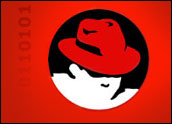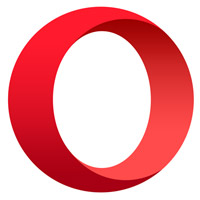
What is Red Hat up to with its launch this week of the opensource.com Web page?
This replaces the “Truth Happens” page, which ran articles and videos on open source, intellectual property, transparency, and other issues.
“Opensource.com is now the place to go to find out about how opensource principles are reshaping business, law, art and, of course, technology,” wrote Colin Dodd on the “Truth Happens” page to announce its closing. “We had a great run over here, but the subject outgrew this forum.”
So what is opensource.com? It’s positioned as a gathering place, but the description of open source from the site’s “about” page sounds like it stretches far beyond the concept of freely exchanging zeros and ones.”The open source way is more than a development model; it defines the characteristics of a culture,” it says. “The open source way is about possibility. The open source way multiplies.”
There are several sections on the page, including “Life,” “Education,” “Business,” and “Law.” All the articles on the first page were written by Red Hat staffers, with the exception of the one written by Chris Grams, who used to work at Red Hat and is now a partner in the agency that developed the “Truth Happens” campaign.
Red Hat’s View of Opensource.com
Red Hat CEO Jim Whitehurst positions opensource.com as one of the ways in which Red Hat gives back to the open-source community. “Our desire is to create a connection point for conversations about the broader impact that open source can have — and is having — even beyond the software world,” he wrote in his blog introducing opensource.com. Participation is open to all.
“We know there are opportunities to apply the open source way broadly in business, in government, in education, in the law, and throughout our lives,” Whitehurst wrote.
Red Hat will grow the site’s functionality and content.
Bringing Back the Pizzazz?
Exactly what Red Hat is trying to achieve remains unclear, despite Whitehurst’s explanation.
Could opensource.com be Red Hat’s attempt at reviving excitement in the open-source movement?
“The first generation of Linux and open source folks are probably headed into their 40s and 50s, and I wonder if this is a way for Red Hat to get people energized and talking about open source the way they used to in the 80s,” Charles King, principal analyst at Pund-IT, told LinuxInsider.
“Generally, when an organization begins talking about something in a hyperbolic way, it makes me wonder if it’s doing that because nobody else is,” King pointed out.
The Story Behind Red Hat’s Story?
There are other possible reasons why Red Hat launched opensource.com. Perhaps the site was put up in an attempt to clarify the difference between open source and collaboration, said King. “About three years ago, players who’d been in the Linux community for years began distancing themselves from open source,” King said. “They were being very careful in differentiating what was happening in the Linux world from the broader open source world.”
Those Linux players seemed to want to make it clear that Linux is an iteration of open source, King explained. Shortly after that, vendors began talking about collaboration, he said.
So what’s the difference between the two? “Collaboration tends to be professionally focused by, for example, having an organization useLotus Notes to encourage collaboration between its staff or with another company,” King said. “Open source tends to be more focused on contributions from people doing what they do for love.”
It all boils down to love versus money, it seems.
Or perhaps it could be that Red Hat is digging in and securing its defenses before Oracle thrashes the Linux world following the completion of its acquisition of Sun Microsystems this week. Red Hat could be threatened by Oracle’s offering its own version of Red Hat Linux.
“I love Linux,” Oracle CEO Larry Ellison said at a briefing Wednesday on Oracle’s plans in the wake of the deal’s completion. “We do offer Hat, but we make it interesting,”
Or could it be that Red Hat feels threatened by Oracle’s approach to open source, which revolves around standards-based products that interoperate within the Oracle world? “We’ve always focused on a design philosophy of openness around standards, interoperability, and across architectures,” said Thomas Kurian, Oracle’s executive vice president of product development and software strategy, at the briefing.
Bah, Humbug!
Open source is all rather loosey-goosey to Jim McGregor, chief technology strategist at In-Stat. “True open source is a real headache,” he told LinuxInsider. “It has resulted in little market momentum and more fragmentation than anything else.”
Open source needs a third party to control the standards, McGregor contended. “That someone should preferably be an independent third party such as an academic institution,” he said.





















































The open source/FOSS community wonders why people think they are socialists. Now that Red Hat has come out of the closet no one will have to think that any more, they will know it as a fact.
Let me guess..
… You must be an American (USA-ian).